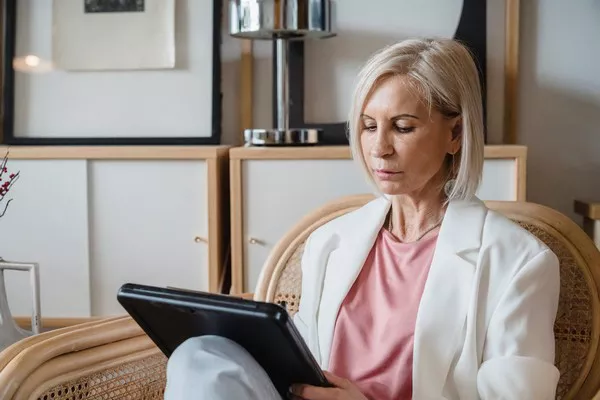Anxiety is a common mental health issue that affects millions of people worldwide. It can manifest in various forms, including generalized anxiety disorder, panic disorder, and social anxiety. While many treatments are available, such as therapy and medication, one effective and accessible way to manage anxiety is through exercise. This article will explore how exercise can relieve anxiety, the mechanisms behind its effects, different types of exercise that can help, and practical tips for incorporating exercise into daily life.
1. Understanding Anxiety
What is Anxiety?
Anxiety is a natural response to stress. It is characterized by feelings of worry, fear, and apprehension. While some anxiety is normal and can even be beneficial in certain situations, excessive anxiety can interfere with daily life. Symptoms of anxiety can include:
- Restlessness
- Fatigue
- Difficulty concentrating
- Irritability
- Sleep disturbances
- Physical symptoms such as increased heart rate or sweating
Types of Anxiety Disorders
There are several types of anxiety disorders, including:
Generalized Anxiety Disorder (GAD): Characterized by excessive, uncontrollable worry about various aspects of life.
Panic Disorder: Involves recurrent panic attacks, which are sudden periods of intense fear and discomfort.
Social Anxiety Disorder: Involves intense fear of social situations and being judged by others.
Specific Phobias: Intense fear of specific objects or situations.
Understanding the nature of anxiety is crucial for finding effective management strategies.
The Impact of Anxiety on Daily Life
Anxiety can have a significant impact on various aspects of life, including work, relationships, and overall well-being. Chronic anxiety can lead to physical health problems, such as heart disease, gastrointestinal issues, and a weakened immune system. Therefore, finding effective ways to manage anxiety is essential for maintaining a healthy and fulfilling life.
2. The Connection Between Exercise and Anxiety Relief
Physiological Mechanisms
Exercise affects the body in several ways that can help reduce anxiety:
Release of Endorphins
One of the primary ways exercise alleviates anxiety is through the release of endorphins. Endorphins are neurotransmitters that act as natural painkillers and mood elevators. Physical activity stimulates the production of endorphins, leading to feelings of happiness and euphoria, often referred to as the “runner’s high.” This increase in endorphins can help counteract feelings of anxiety and promote a more positive mood.
Reduction of Stress Hormones
Regular exercise helps lower levels of stress hormones, such as cortisol. High levels of cortisol are associated with anxiety and can contribute to feelings of tension and unease. By reducing cortisol levels, exercise helps mitigate the physiological effects of anxiety.
Improved Sleep Quality
Anxiety often disrupts sleep, leading to a cycle of fatigue and increased anxiety. Exercise can improve sleep quality by promoting deeper sleep and helping individuals fall asleep more quickly. Better sleep enhances overall well-being and reduces anxiety symptoms.
Enhanced Brain Function
Exercise increases blood flow to the brain and promotes the growth of new neurons, particularly in the hippocampus, an area involved in regulating mood and anxiety. This neurogenesis can improve cognitive function and emotional regulation, making it easier to manage anxiety.
2.2 Psychological Mechanisms
In addition to physiological benefits, exercise has psychological effects that contribute to anxiety relief:
Distraction from Worries
Engaging in physical activity provides a break from daily stressors and worries. Focusing on exercise can help individuals take their minds off anxious thoughts and create a mental reset. This distraction can be particularly beneficial during periods of heightened anxiety.
Increased Self-Esteem
Regular exercise can boost self-esteem and confidence. Achieving fitness goals, whether big or small, enhances a person’s self-image. This increased self-esteem can help individuals feel more capable of handling anxiety-provoking situations.
Social Interaction
Participating in group exercises or sports can foster social connections. Social support is crucial for managing anxiety, as it provides individuals with a network of people who can offer encouragement and understanding. Engaging with others during exercise can reduce feelings of isolation and anxiety.
Mindfulness and Presence
Many forms of exercise, such as yoga and tai chi, incorporate mindfulness techniques. These practices encourage individuals to focus on the present moment, reducing anxiety about the past or future. Mindfulness can help individuals manage anxiety more effectively by promoting relaxation and awareness.
3. Types of Exercise Effective for Anxiety Relief
Different types of exercise can be beneficial for anxiety relief. Here are some effective options:
Aerobic Exercise
Aerobic exercises, such as running, cycling, and swimming, are particularly effective in reducing anxiety. These activities increase heart rate and promote the release of endorphins. Aim for at least 150 minutes of moderate aerobic exercise per week for optimal benefits.
Strength Training
Strength training can also alleviate anxiety. Lifting weights or using resistance bands not only improves physical strength but also enhances mental resilience. Many people find that achieving strength goals boosts confidence and reduces feelings of anxiety.
Yoga
Yoga combines physical movement with mindfulness and breathing techniques. It can significantly reduce anxiety and promote relaxation. Regular practice of yoga encourages individuals to focus on their breath and body, which can help calm the mind and reduce anxious thoughts.
Mindfulness-Based Exercises
Activities like tai chi and qigong focus on slow, deliberate movements and deep breathing. These practices promote relaxation and mindfulness, making them effective for anxiety relief. Mindfulness-based exercises can help individuals develop coping strategies for managing anxiety.
Recreational Activities
Engaging in recreational activities, such as dancing, hiking, or playing sports, can also provide anxiety relief. These activities combine physical movement with enjoyment, making them effective for improving mood and reducing anxiety.
4. Practical Tips for Incorporating Exercise into Daily Life
Incorporating exercise into daily life can be challenging, but it is essential for managing anxiety. Here are some practical tips:
Set Realistic Goals
Start with small, achievable goals. Setting realistic targets makes it easier to stick with an exercise routine. For example, aim for 10-15 minutes of exercise a day and gradually increase the duration.
Find Activities You Enjoy
Choose activities that you find enjoyable. Whether it’s dancing, hiking, or playing a sport, finding pleasure in exercise increases the likelihood of maintaining a routine.
Schedule Exercise
Treat exercise like an important appointment. Schedule time for physical activity in your daily or weekly routine. Consistency is key to reaping the benefits of exercise.
Involve Others
Exercising with friends or family can make it more enjoyable and provide social support. Join a class or start a workout group to foster connections while staying active.
Mix It Up
Variety can keep exercise interesting. Incorporate different types of physical activities into your routine to prevent boredom and work different muscle groups.
Listen to Your Body
Pay attention to how your body feels during and after exercise. If you experience pain or discomfort, adjust your routine accordingly. It’s essential to find a balance that works for you.
Practice Mindfulness
Incorporate mindfulness techniques into your workouts. Focus on your breath, movements, and surroundings during exercise. This practice can enhance the anxiety-reducing benefits of physical activity.
5. Overcoming Barriers to Exercise
Many individuals face barriers to incorporating exercise into their lives. Here are some common obstacles and strategies to overcome them:
Lack of Time
Many people feel they do not have enough time to exercise. To overcome this barrier, consider shorter workouts or integrate physical activity into daily tasks. For example, take the stairs instead of the elevator or walk during lunch breaks.
Low Motivation
Feeling unmotivated can hinder exercise efforts. Setting specific, achievable goals and tracking progress can help boost motivation. Finding a workout buddy can also provide accountability and encouragement.
Physical Limitations
Individuals with physical limitations may feel discouraged from exercising. Consult with a healthcare provider or fitness professional to find suitable activities. There are many low-impact exercises that can be beneficial for individuals with various limitations.
Environmental Factors
Weather and location can impact exercise routines. Consider indoor options, such as home workouts or gym classes, during unfavorable weather. Finding a local gym or community center can also provide access to facilities and classes.
Conclusion
Exercise is a powerful tool for relieving anxiety. Through physiological and psychological mechanisms, physical activity helps alleviate the negative effects of anxiety on the body and mind. By promoting the release of endorphins, reducing stress hormones, improving sleep quality, and fostering social connections, exercise contributes to overall well-being.
Incorporating exercise into daily life can be challenging, but the benefits are well worth the effort. By setting realistic goals, finding enjoyable activities, and overcoming barriers, individuals can create a sustainable exercise routine that enhances their ability to manage anxiety.
Ultimately, exercise is not just a means of physical fitness; it is a vital component of mental health and anxiety management. By prioritizing physical activity, individuals can improve their resilience to anxiety and enhance their overall quality of life. Whether through aerobic workouts, strength training, yoga, or recreational activities, finding ways to stay active can lead to a healthier, happier, and less anxious life.
Related topics:




























